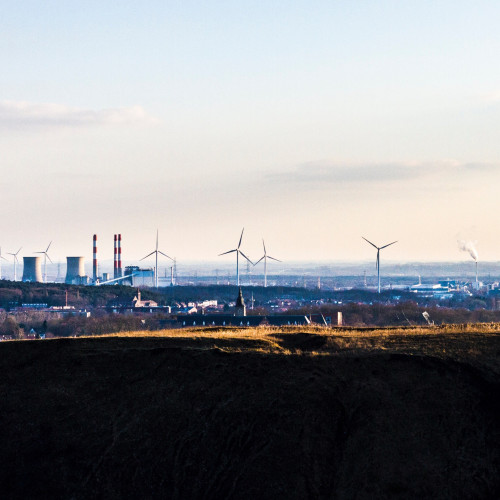In 2023 the world faces many challenges. How, for example, to prevent future pandemics, how to maintain dialogue between nations which disagree, how to resolve political tensions and conflicts peacefully, how to curb inflation and promote free trade, how to achieve faster economic growth.
One challenge with devastating potential consequences is climate change. Last month the UN World Meteorological Organisation warned that the rise in average global surface temperature since pre-industrial times is likely to exceed 1.5C before the end of this decade. This is the level above which climate change becomes dangerous and may start to threaten the survival of the human species.
The need for the Green Energy Transition is therefore urgent. Every region of the world must consider how to cut its CO2 emissions substantially and swiftly. For countries like Kazakhstan which have the benefit of abundant reserves of fossil fuels this is a very big and unavoidable challenge.
But all challenges, however difficult, contain opportunities and this is certainly true in the case of the climate challenge. To address it successfully the energy industry must adapt.
Modern economies require an uninterrupted supply of electricity to be available to all consumers. Electricity demand is growing as it is increasingly used for heating, cooling and surface transport. The rapid expansion of electricity intensive data processing technologies is also driving up consumption.
Against this background the electricity generation industry must eventually be completely decarbonised. After 2050 coal and gas fired power plants will only be able to operate with carbon capture, utilisation and storage (CCUS).Although this is technically possible the cost is currently too high to be economically viable. The reluctance of fossil fuel companies to fund research into how these costs can be cut means that progress will only be achieved quickly if widespread government intervention, preferably on an internationally coordinated basis, takes place.
Even if affordable CCUS becomes widely available a large scale shift away from fossil fuels to low carbon energy sources must occur by mid-century. This will involve the continued rapid expansion of renewable energy capacity. Private investment in renewables has already been stimulated by large falls in the cost of solar and onshore wind power.
However solar and wind are intermittent energy sources and cannot be the only providers of large scale baseload electricity capacity. A gap exists which can best be filled by nuclear power.
Fortunately Kazakhstan, the world’s leading uranium producer, is now ideally placed not only to make nuclear a significant part of its energy mix but also to be a leader of a switch away from fossil fuels to low carbon alternatives across the whole Central Asian region.
A move towards nuclear is happening in Europe. Opposition to nuclear in the European Commission has been replaced by recognition that some EU countries can only achieve their CO2 reduction targets by building new nuclear reactors. In an important recent change of heart the EU now includes nuclear in its taxonomy of sustainable energy technologies.
The emergence of small advanced modular reactors, some of which will be operational by the end of this decade, will also make it possible for nuclear power to be deployed more widely than before and will drive down the cost of building new reactors.
The green energy transition isn’t just about electricity generation. Improved energy efficiency is more often discussed than implemented but it has the potential to reduce consumption and CO2 emissions substantially, particularly from buildings. The switch to electric vehicles, which is happening faster than many expected, will eventually limit oil’s role as a transport fuel to aviation.
The transition can also be helped by wider use of carbon pricing to drive investment in all kinds of low carbon technologies. Carbon pricing can take the form of both carbon taxes, including border tax adjustments, and carbon markets. After a slow start the EU emissions trading system, the largest and most liquid in the world, has seen its carbon price rise more than tenfold in the last five years.
In conclusion therefore making the right decisions on climate change will open up new opportunities for economic growth. The low carbon economies of the future will be high growth countries whose citizens enjoy the cleanest environments and the best air quality, ensuring that they lead long and healthy lives.
The clean energy transition will involve great change and some industries which have prospered in the past must inevitably contract. But new and profitable ones will arise. Nowhere is better placed to be in the forefront of these than Kazakhstan and Central Asia.








